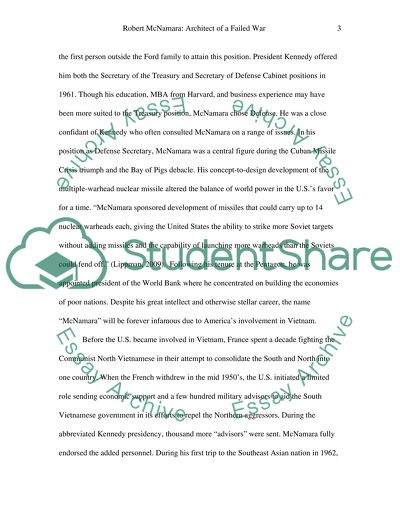Cite this document
(“Robert McNamara: Architect of a Failed War Essay”, n.d.)
Retrieved from https://studentshare.org/history/1402382-robert-mcnamara-s-influence-on-the-vietnam-war
Retrieved from https://studentshare.org/history/1402382-robert-mcnamara-s-influence-on-the-vietnam-war
(Robert McNamara: Architect of a Failed War Essay)
https://studentshare.org/history/1402382-robert-mcnamara-s-influence-on-the-vietnam-war.
https://studentshare.org/history/1402382-robert-mcnamara-s-influence-on-the-vietnam-war.
“Robert McNamara: Architect of a Failed War Essay”, n.d. https://studentshare.org/history/1402382-robert-mcnamara-s-influence-on-the-vietnam-war.


